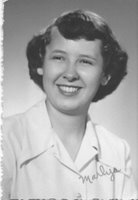

Senior Moments times two: Self-Help and Inspiration for SeniorsBook Reviews:
For seniors looking for self-help, inspiration, or just indications that the writing world cares about us, two books I've just read, with identical titles but different approaches, are certainly worth reading.
I. David Wayne Silva’s
Senior Moments: Getting the Most Out of Your Golden Years (Outskirts Press, 2005) is a self-help book and an autobiography by a senior citizen for other seniors. This book is a series of appropriately-titled chapters about the inevitable challenges of aging and the experiences of the author and his friends in dealing with them.
In the first chapter, “Thoughts on Time,” Silva writes, “Time that seemed endless in our youth now flies by with brutal resolution.” However, one positive aspect of aging is that mentally active seniors learn to savor every moment. “We see beauty in people, flowers, sunsets, and our animal friends,” becoming more aware of the beauty that surrounds us. This book shows how Silva and his friends have done exactly that. The author offers a great deal of practical advice.
In chapters including “The Christmas Tree,” “Another New Year’s Day,” and “Valentine’s Day,” Silva deals with loss and how to find comfort on what could be lonely, depressing holidays. He finds comfort not only in memories, but in observing flowers, pets, even squirrels, and listening to crickets around him. He also finds comfort in his strong religious faith and includes a short prayer at the end of each chapter, yet he does not claim that religion is the answer for everyone.
Toward the end of the book, Silva mentions his own serious health problems in “On Sleepless Nights,” “Thoughts on Pain,” and “Chronic Illness,” but with few complaints. He retains his focus on the positive side of aging, emphasizing in another chapter that “Living Means Growing.” He suggests that we ask ourselves, “Am I still growing? Have I given in to aging and the conditions that growing old brings to our lives?” This book will help the senior reader who answers “No” to the first question and “Yes” to the second to improve his or her life.
Californian David Wayne Silva, a former teacher, school administrator, and family and grief counselor, comes through as a friendly, outgoing, caring senior I would like to meet and talk with. This book should appeal to and comfort anyone old enough to be thinking seriously about the problems of aging, issues almost everyone will face eventually.
II.
Senior Moments, subtitled “A book for seniors and those who love them,” by Jacqueline D. Byrd (Byrd & Byrd, 2005), is based on the author’s weekly “Senior Moments” column, originally written for two Maryland newspapers. Mrs. Byrd is more Baby Boomer than Senior Citizen, but as an attorney specializing in Elder Law, she is eminently qualified to advise seniors and caregivers on various issues such as estate planning, health care, senior housing, and other challenges ranging from how to tell when it’s time to stop driving, how to avoid scams and frauds, and how to recognize and deal with elder abuse to how to remain active and stay happy into old age.
This book is full of valuable information; the author cites and quotes various experts on aging and legal issues, and includes a detailed table of contents that makes finding specific topics and resources easy.
The final chapter is more personal as Byrd discusses her own “extraordinary” mother and grandchildren and her coming sixtieth birthday. There, she contemplates “the realities and the mystery and blessing of growing older.”
There are many opportunities for seniors, but, writes Jackie Byrd, some seniors won’t consider volunteering at a senior center, moving to assisted living when it’s needed, or joining senior activity groups because “old people are there.. . . So, unneeded, they waste away, full of sadness and regret, feeling misunderstood and unloved.” Anyone who reads Byrd’s book carefully and heeds her advice can avoid such a fate.
Copyright 2006 by Marlys Marshall Styne
 Last Friday, I attended a luncheon at the Ritz Carlton Hotel presented by The Clare, the future lifetime care community where I expect to live in two or three years or whenever the fifty-three story building is completed. It's always a pleasure to meet a few of my future neighbors.
Last Friday, I attended a luncheon at the Ritz Carlton Hotel presented by The Clare, the future lifetime care community where I expect to live in two or three years or whenever the fifty-three story building is completed. It's always a pleasure to meet a few of my future neighbors.
























